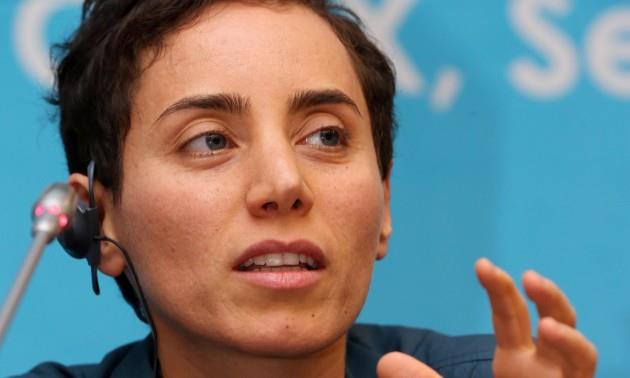
Iranian genius who rejected hijab is mourned by Tehran
Few academic careers are as short yet prolific and brilliant as that of the globally-recognized Iranian mathematician Maryam Mirzakhani, who died at a Californian hospital on Saturday, aged 40.
She rose to international fame by winning the most prestigious scientific award in her field during the summer of 2014, one year after being diagnosed with breast cancer that subsequently spread to her bone marrow, resulting in her untimely death on 15 July 2017.
The DailyBrief Must-reads from across Asia - directly to your inboxEulogy and praise have poured on the family home in Tehran from scientists and intellectuals around the world, with Stanford University President Marc Tessier-Lavigne saying her influence would live in the 'thousands of women she inspired' around the globe, especially those who dream of pursuing academic careers in math and science — two areas that are frowned upon for women in conservative societies across the Arab and Muslim Worlds.
Iranian newspapers broke a strict taboo over the weekend, publishing front page photographs of Mirzakhani with no hijab. This was starkly different from their behavior three years ago, when she was awarded the Fields Medal, considered the Nobel Prize for mathematicians but given to geniuses under the age of 40 only. Iranians were extremely proud that one of theirs was being recognized at such an international level. Iranian dailies Photoshopped her picture, however, so that she was wearing a hijab, in accordance with the country's strict dress code.
They have been far more open following her death, with one state-newspaper coining her 'The Queen of Mathematics.' Others compared her with her Persian forerunner Khwarizmi (780-850) a renowned scientist of the Abbasid Era whose name provides the Spanish word quarismo, and the Portuguese algorismo – both of which mean 'digit.'
Iranian academics are demanding that her name be formally attached to scientific theories she helped promote or study, while one newspaper compared her 2014 award with Marie Curie's winning of the Nobel in physics and chemistry back in 1903. The Iranian tributes were led by President Hasan Rouhani, who posted a photo of Mirzakhani on Instagram, saying that her 'grievous passing… is very much heartrending.' Even Arabic media accustomed to being aggressively anti-Iranian, including the London-based al-Hayat and Asharq Alawsat, devoted front page space to giving praise and homage to her. They added a political twist, however, saying that her success in the US was a result of the massive brain drain that had crippled Iran since the Islamic Revolution of 1979, which happened when Mirzakhani was just two years old.
Dr. Mirzakhani was born in Tehran on 3 May 1977, where she attended the all-girl Farzanegan School, reserved for exceptionally gifted students. Speaking of her childhood in 2008, she said that she had always dreamt of becoming a writer, rather than a scientist, and actually scored poorly in math while at school. 'I never thought I would pursue mathematics until my last year in high school,' she said, citing her older brother as influencing her decision. 'My first memory of mathematics is probably the time that he told me about the problem of adding [all] numbers from 1 to 100." (The trick is to look at pairs that add up to 101, producing an answer of 5,050.) The young Mirzakhani grew up in the middle of the terrible conflict between her country and Iraq, which caused the deaths of hundreds of thousands of Iranians, including relatives and family friends. 'I think I was the lucky generation, because I was a teenager when things became more stable,' she recalled many years later.
Mirzakhani participated in the 1994 International Mathematical Olympiad, becoming the first Iranian to achieve a perfect score and to win two gold medals. Mirzakhani then studied math at the Sharif University of Technology in Tehran, a prestigious research institution, before going to Harvard, where she obtained a PhD in 2004. Before leaving Tehran, in February 1998, Mirzakhani survived a bus crash that killed seven award-winning Iranian mathematicians who were riding with her. In the US she became a Research Fellow of the Clay Mathematics Institute and a professor at Princeton University, before moving to Stanford in 2008, where she continued to teach and work until her death.
Comments
Legal Disclaimer:
MENAFN provides the
information “as is” without warranty of any kind. We do not accept
any responsibility or liability for the accuracy, content, images,
videos, licenses, completeness, legality, or reliability of the information
contained in this article. If you have any complaints or copyright
issues related to this article, kindly contact the provider above.


















Comments
No comment